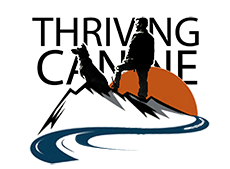 I'm sure we've all heard the phrase teaching dogs Heel. However, the meaning and purpose of Heel may not be all that clear to everyone. So, I'm writing this article to answer some fundamental questions regarding Heel – what it means, what the proper positioning is and why it matters. Please note, this is not a "how to" article, it's a "why to" article.
I'm sure we've all heard the phrase teaching dogs Heel. However, the meaning and purpose of Heel may not be all that clear to everyone. So, I'm writing this article to answer some fundamental questions regarding Heel – what it means, what the proper positioning is and why it matters. Please note, this is not a "how to" article, it's a "why to" article.What Exactly Does Heel Mean?
The Heel command means for your dog to get by your side and stay by your side. If you are moving and call "Heel," the dog walks at your side. If you are standing still and call "Heel," the dog comes to your side and sits.
Sounds pretty basic and hopefully we're all on the same page.
What Exactly is Heel Position?
If you are standing next to your dog with the heel of your foot in line with the dog's front foot you are in Heel position. Some dog owners and handlers have certain expectations with how exact their dog's heel placement is. A little wiggle room for personal choice as far as the exact position is reasonable (give or take a couple inches), but the dog's front legs should be more-or-less next to yours. Some trainers like the dog slightly ahead and some prefer the dog to be slightly behind, but, if you fall out of the dog's peripheral you are definitely no longer in Heel. Whatever you choose, the key is to be consistent so the dog has no doubt where the line is.
Why Do Dogs Need to Learn Heel?
The value of what I call a "Functional Heel" is that it provides control for the handler and mental exercise for the dog. It provides leadership, drains energy and creates relaxation in ways that a loose leash walk does not. Walking at your side for long durations of time, on a loose leash, avoiding the temptation to sniff and pee on everything requires a lot of mental discipline from a dog. It requires a ton of impulse control and for most dogs it is a very diffucult task.
Unless you are going to walk many miles, walking at a human pace is actually not much physical exercise for a dog but a structured walk in Heel position is a lot of mental exercise. Maintaining Heel position keeps the dog in a more relaxed, less reactive, working state of mind. You are constantly in your dog's peripheral vision which is a constant reminder that they have a job to do, which is simply to stay in position. The dog is taking direction from you rather than investigating every distraction that comes along. Once you allow the dog to forge ahead far enough that you fall out of view it tends to be a matter of "out of site, out of mind" and most dogs will begin to start making more choices, following less direction and acting on their own impulses. This is where we often get pulling, leash aggression and so forth. Dogs do not need to Heel at all times but it is a very valuable command and I recommend that all dogs learn and practice it on a daily basis.
What is Focused Heeling?
Focused Heeling is what you tend to see in competition obedience where the dog is looking up and totally focused on the handler. Most pet dog owners don't need or care about this level of training but it can actually be fun and useful to train your dog to do this in short spurts. It can be helpful to be able to get your dog's attention this way, especially when challenged by environmental distractions. You obviously would not spend a whole walk with your dog staring up at you, but a few seconds to a few minutes at a time can be fun, challenging and rewarding. Work towards doing this by gradually adding in higher and higher levels of distraction and don't forget to make it fun and rewarding for both you and your dog.
How Much of the Walk Should be Spent Heeling vs Loose-Leash Walking?
The Heel to Loose-Leash Walking ratio is more of a personal choice or is prescribed by a canine professional given your personal situation and Fido's potential issues. The most important things to remember are that you (the human, handler, walker) decide if it's Heel-Time or Free-Sniff Time at any given moment, not the dog. And, even during that Free-Sniff time, the dog is not allowed to pull. (Oh, the calls I've gotten from people who have broken bones and sprained ankles because they never got their dog's pulling issue under control.) You should be walking the dog, not the other way around. Even if the dog is in front of you he should not be leading you. In other words you can still lead from behind, just as long as you don't let the dog get the wrong idea. That said, I usually recommend a 50:50 Heel:Sniff ratio as a minimum and a 80:20 for more serious cases such aggression, anxiety or just overly unruly dogs. I also tend to give sniff time at special locations such as a park or open area and keep to Heeling when traveling from one sniff place to another. Feel free to find your own balance.
As with any activity that humans and dogs share, the more everyone involved is having fun and getting their needs met, the more often these activities are likely to be repeated. If walking the dog is such a pain and a chore that you find yourself going days or weeks without walking the dog, you will likely have a lot of other behavior issues start to bubble to the surface. If walks are enjoyable, they'll be done more often, with bigger smiles and wagging tails.
Need some instruction on how to properly train your dog to Heel? Thriving Canine offers group classes, private lessons, video courses and video chat lessons.
-Chad Culp, Certified Dog Trainer and Canine Behavior Consultant
© Thriving Canine 2013
Related Topics:
Check out www.ThrivingCanine.com for more free articles, videos and sign up for the weekly newsletter.
Subscribe to Thriving Canine YouTube Channel
Apply for membership of the THRIVING CANINE UNIVERSITY Facebook group. (please read the rules before joining)



